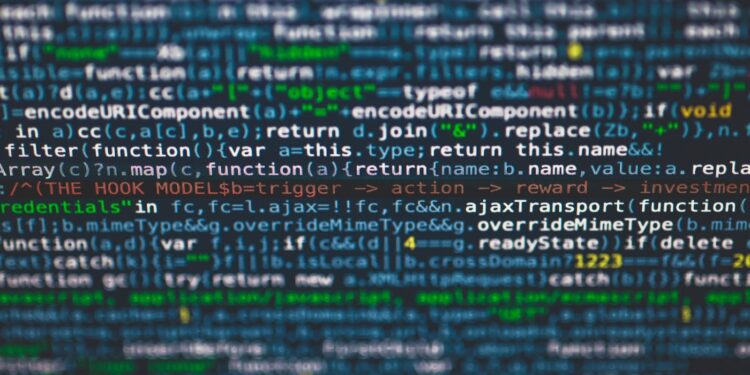Have you seen codes like these (e.g., WPA, WEP, SSID, MAC) on your router, and wondered what they mean? These codes are related to your Wi-Fi network’s security and identification features.
WPA and WPA2 (Wi-Fi Protected Access) are encryption protocols that secure your network from unauthorized access. WPA2 is the newer and more secure protocol.
WEP (Wired Equivalent Privacy) is an older, less secure encryption protocol.
SSID (Service Set Identifier) is the name of your Wi-Fi network, and your router broadcasts it.
MAC (Media Access Control) refers to the unique identifier assigned to the network adapter of your devices. Your router has a MAC address too, which may be required for configuration or troubleshooting.
“5”” aoc g2590px/g2″
Have you ever seen codes like “192.169.1.1” sprawled across your router? If so, you’re not alone, as these codes are common on routers. But what do they mean, and how do they help you?
Let’s look at what router codes are and how they can help further secure your connected devices.
WPA and WPA2 (Wi-Fi Protected Access) are encryption protocols that secure your network from unauthorized access.
What Are Router Codes?
Router codes, or MAC addresses or physical addresses, are unique identifiers assigned to every network interface controller (NIC) on a device that connects to a network. These codes consist of up to 12 digits and identify devices on a local network, such as a home Wi-Fi network.
Most people may have easily seen the MAC address of their device, as it is commonly printed on the back or bottom of their router. However, it is important to know that MAC addresses can be altered or spoofed, and should not be solely relied upon for secure network access control.
Pro tip: To ensure secure access to your network, it is recommended to use a combination of MAC filtering, strong passwords, and encryption protocols.
Different Types of Router Codes
If you have seen codes like WEP, WPA, WPA2 on your router, you may have wondered what they mean. These codes are encryption algorithms used to secure your wireless network.
WEP (Wired Equivalent Privacy) is the oldest and least secure encryption method. It can easily be hacked, and its use is not recommended.
WPA (Wi-Fi Protected Access) improves WEP, with more robust encryption protocols. However, it is vulnerable to brute-force attacks.
WPA2 (Wi-Fi Protected Access II) is currently the most secure encryption method for home Wi-Fi networks. It uses an Advanced Encryption Standard (AES), which is virtually uncrackable.
Before selecting an encryption method for your Wi-Fi, consider the age and compatibility of your devices, as older devices may not support newer encryption methods like WPA2.

Importance of Identifying Router Codes
Understanding router codes is crucial when troubleshooting internet connectivity issues or when you want to change your router settings. For example, have you seen codes like “WPA2”, “SSID”, or “MAC address” on your router, but didn’t know what they meant?
Here’s why it’s important to identify these router codes:
WPA2: WPA2 is the Wi-Fi Protected Access 2 protocol to encrypt and secure wireless networks. Understanding this code is important when changing your Wi-Fi password or troubleshooting connectivity issues.
SSID: SSID, or Service Set Identifier, is the unique name of your wireless network. Knowing your SSID is handy when setting up new devices on your network or troubleshooting.
MAC address: The MAC address is a unique identifier assigned to every device connected to a network. Understanding MAC addresses is crucial when limiting or controlling access to your network.
Identifying these and router codes will help you better manage and secure your home network.
“.5″” aoc g2590px/g2″
Your router is the key to accessing the internet in the comfort of your home, but if you’ve noticed that your router has codes such as WEP, WPA, or WPA2 printed on it, you may have wondered what they mean.
This article will discuss the different types of router codes and how to identify them. Let’s get started.
Router codes, or MAC addresses or physical addresses, are unique identifiers assigned to every network interface controller (NIC) on a device that connects to a network.
How to Find Router Codes
Finding your router code is important for troubleshooting and configuring your network connection.
When you look at your router, you might see many numbers and letters printed on the device. These codes are the default login credentials for accessing the router’s settings page.
If you have changed the login credentials and can’t remember them, you can still recover your router code by resetting it to its factory settings. To do this, locate the small reset button on your router and press it down for 10-15 seconds.
This will reset your router’s default settings and login credentials. However, resetting your router will erase all your previously configured settings. So, make sure to take a backup of all your settings first.
Pro tip: To avoid the need for resetting your router, write down your custom login credentials in a safe place where you cannot misplace them.
Types of Router Codes and Their Meanings
If you have seen codes like these on your router, you should know that they are most likely router codes. Understanding what these codes mean can help you troubleshoot any issues you are experiencing with your internet connection. Here are the most common router codes and their meanings:
DNS: DNS stands for Domain Name System. This code indicates an issue with your DNS server, translating domain names into IP addresses.
HTTP: HTTP stands for Hypertext Transfer Protocol. This code indicates an issue with the HTTP connection between your router and the website you are trying to access.
WAN: WAN stands for Wide Area Network. This code indicates an issue with your internet connection outside of your local network.
WPA/WPA2: WPA/WPA2 are encryption standards for securing your wireless network. If you see this code, your wireless network is secured with one of these encryption standards.
Pro Tip: If you are experiencing internet connectivity issues, try resetting your router or contacting your internet service provider for assistance.

Understanding the Significance of Router Codes
Have you seen codes like these on your router? Router codes or labels like WEP, WPA, and WPA2 are significant for securing your router’s wireless network.
WEP (Wired Equivalent Privacy) is an outdated security protocol vulnerable to hacking.
WPA (Wi-Fi Protected Access) is the improved version of WEP, and WPA2 is the most secure option currently available.
If your router is over a few years old, it may not support WPA2. However, you can still use the WPA protocol to optimize your router’s security.
To change your router’s security settings, access the router’s configuration page through a web browser. Type the router’s IP address in the browser’s URL bar to access the page. From there, you can change the security protocol, create a strong password, and secure your wireless network.
Knowing your router’s security codes can protect your online privacy and minimize cyber-attack risks over your wireless network.
5″ aoc g2590px/g2
If you’ve ever come across strange codes on your router, you may be experiencing router issues that need to be addressed. Fortunately, with a few basic steps, these issues can be resolved and any wrong settings can be corrected.
Let’s review a few tips to help you understand what’s happening and how to properly fix the problem.
Troubleshooting Router Issues Using Codes
Router issues can be a big hassle, especially when you don’t understand the codes appearing on them. If you’ve seen codes like “DNS server not found,” “Limited connectivity,” and “Authentication failed,” there are several troubleshooting steps you can take to fix your router problems.
First, restart your router and modem, wait a few minutes, and then try connecting to the internet again. If that doesn’t resolve the issue, check your router’s cables and connections to ensure they are properly connected.
You can also try resetting your router back to its default settings, which will erase any custom settings you’ve made on the router. If neither of these solutions works, you may need to update your router’s firmware or replace the router entirely.
By understanding the codes on your router, you can take the necessary troubleshooting steps to solve common router problems and get back to using the internet without interruptions.
When you look at your router, you might see many numbers and letters printed on the device. These codes are the default login credentials for accessing the router’s settings page.
.5″ aoc g2590px/g2
Have you seen codes like “404 error” or “192.168.1.1” on your router and faced issues like no internet connectivity or slow internet speeds? Here are some common router problems and their solutions that can help you fix these issues:
1. Connection issues: If you face issues connecting to the internet or Wi-Fi, try restarting your router, checking the cables, or updating the router firmware.
2. Slow speeds: Slow internet speeds can be due to congestion, distance from the router, or outdated hardware. Try reducing the number of devices connected, relocating the router, or upgrading to a faster router model.
3. Security issues: Router security issues can lead to hacking or unauthorized access to your network. Change the default login credentials, use a strong password, and enable WPA2 security to prevent these issues.
Following these solutions, you can troubleshoot and fix common router problems and enjoy seamless internet connectivity.

Collaborating With Technical Support to Solve Router Issues
Have you seen codes like these on your router? Working with technical support is the best way to solve router issues and get your internet back up and running smoothly.
When contacting technical support, provide them with as much detail as possible about the issue you’re experiencing, including any error codes or messages displayed on your router.
Some common issues that technical support can help you with include:
- Resetting your router and modem to factory settings.
- Updating your router’s firmware.
- Troubleshooting connectivity issues with your devices.
- Identifying and fixing problems with your internet service provider.
Working with technical support can save you time and frustration, allowing you to get back to using your internet connection without interruptions.
















